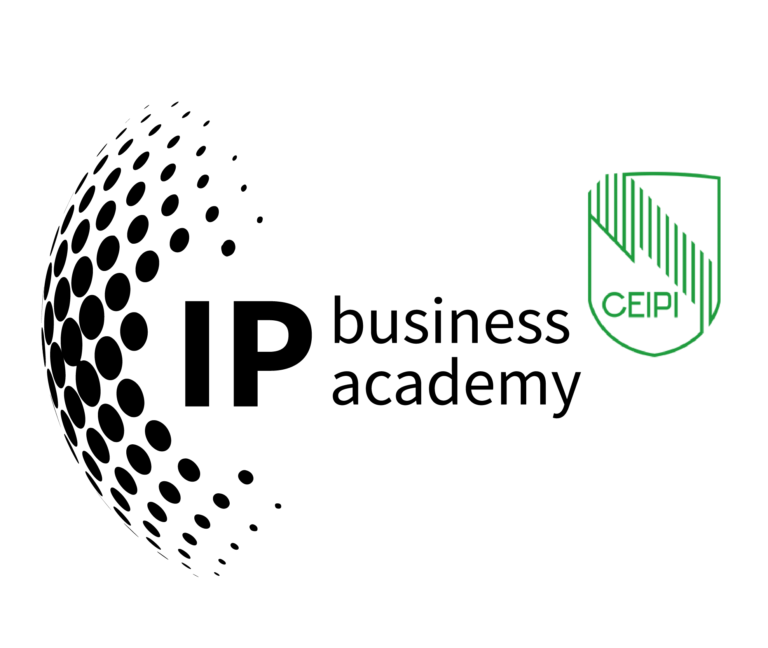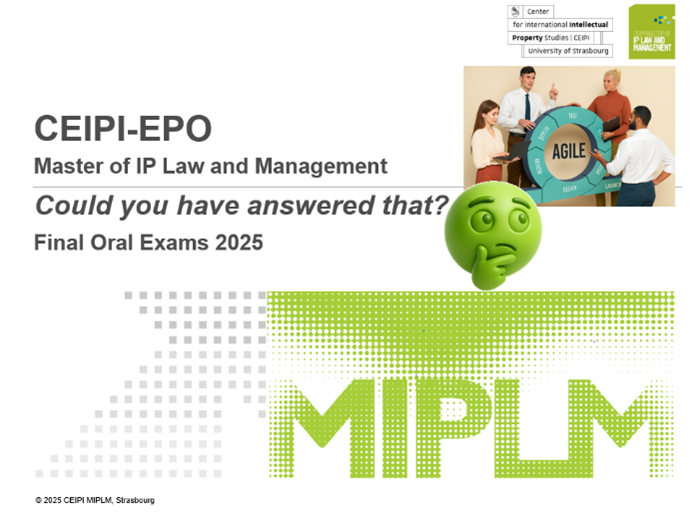Could You Have Answered That? Cracking the CEIPI MIPLM’25 Exam on Agile IP Management
In this oral exam question 21 for the CEIPI Master’s Program in IP Law and Management 2025 candidates are asked to evaluate how IP management can be adapted to support agile innovation processes. The case was situated in a medium-sized European household appliance manufacturer. The company, known for its high-quality kitchen devices, was transitioning from traditional stage-gate processes to agile development frameworks in order to better respond to fast-changing consumer demands and international competition. The agile transformation enabled faster product iterations and greater responsiveness.
However, the company’s legal and IP teams were still operating in a centralized, hierarchical structure with fixed approval processes and delayed IP decision-making. As innovation speed increased, tensions grew. IP issues were often raised too late, and development teams were unsure how to handle protection, clearance, or licensing in an agile environment. The board therefore hired the candidate as an external IP consultant. The task was to assess the organizational gap and propose structural and procedural adjustments to align IP management with agile workflows, while also considering sustainable exploitation through licensing and the importance of licensing compliance.
Here you find the 🔎IP Management Glossary entry on Agile Organization
Here you find the digital IP Lexicon 🔗dIPlex deep dive on IP Organization
What the lecture teaches
The lecture from Module 4 on organization provides the theoretical foundation for this task. It introduces the student to the evolution of organizational structures, from vertically integrated hierarchies toward network-based and agile teams. It highlights how modern innovation environments demand coordination models that minimize transaction and agency costs, especially when internal teams operate semi-autonomously.
From an institutional economics perspective, the module introduces the student to three key theories:
- Property Rights Theory,
- Transaction Cost Theory, and
- Agency Theory.
These frameworks help explain why rigid structures create friction in agile environments, and how better alignment of authority, incentives, and resource flows can lead to better outcomes. The lecture also shows that delegation and decentralization only succeed if roles, responsibilities, and decision rights are clearly distributed.
In agile IP management, this means pushing IP responsibilities closer to the innovation process and enabling developers, designers, and product managers to identify and handle IP matters during sprints. Agile-compatible IP management requires embedding IP into the product lifecycle—not as a legal afterthought, but as a strategic resource that evolves alongside development. This includes integrating IP checkpoints into sprint cycles, creating cross-functional communication routines, and ensuring fast, informed decisions on IP protection, use, and licensing.
The second part of the lecture is devoted to organizational roles and the strategic governance of IP. It emphasizes the importance of linking legal structures with exploitation mechanisms. In this context, licensing is not just a legal tool but a central instrument of monetization and control. Licensing models must be aligned with innovation models, and agile innovation often leads to more modular, collaborative, and open forms of IP use. This requires robust compliance monitoring to ensure that licensing agreements are followed in practice, even as teams adapt, products change, or third-party usage expands.
How the IP Business Academy IP Subject Matter Experts supports this topic
Several Subject Matter Experts on the IP Business Academy platform provide relevant insights on this topic.
- Erdem Kaya: Why IP Maters for Startups
- Benjamin Delsol: IP Design as a agile leadership tool
- Adam Novak: Agile IP Collaboration
- Tomas Geerkens: Licensing Compliance Monitoring
Learners can find deep dives, articles, and even webinars on:
🔎 IP Management Glossary Entry: IP Licensing Compliance Audit
🔎 IP Management Glossary Entry: Licensing
🔎 IP Management Glossary Entry: Change Management
🎧IP Management Voice Episode #10: Why IP Matters for Startups
🎧 IP Management Voice Episode #34 The Power of Stage-Gate Systems
🎧 IP Management Voice Episdoe #30 Strategic IP Management
Sample solution to the exam task
A structured answer to the exam task requires combining insights from organizational theory, institutional economics, and IP exploitation strategy.
- First, the core of the problem must be identified
the misalignment between fast, iterative innovation processes and slow, centralized IP procedures. Agile product development operates in short cycles, relies on early user feedback, and encourages constant improvement. Legal certainty, however, is often only achieved later through formal IP filings or licensing agreements. This creates a protection gap that can become a business risk. - Second, the structure of the IP function must be reimagined
Instead of acting as a control unit, the IP team must become a collaborative partner. A hybrid model is recommended. A central IP governance unit remains responsible for strategic coordination, risk management, and external enforcement. In parallel, embedded IP champions are placed within each agile product team. These champions are trained to identify invention potential, flag risks, use checklists, and involve the central team when needed. - The third element concerns process integration
Agile IP management requires routines that fit into sprint workflows. This includes tools like invention harvesting canvases, design protection checklists, freedom-to-operate triggers, and regular IP review moments during retrospectives. Importantly, the product backlog must be checked against existing IP rights—both owned and licensed. - Fourth, the company must build a strategy for sustainable exploitation through licensing
Agile product teams may create modular innovation that is valuable even outside the core product. Licensing enables monetization of this surplus innovation. But it must be done carefully. Licensing contracts must clearly define what is being licensed, to whom, and under what conditions. A robust licensing framework includes contract templates, internal approval workflows, pricing models, and partner onboarding routines. Finally, licensing compliance monitoring is essential. Without it, usage rights may be exceeded, royalties go unpaid, and legal claims become difficult to enforce. Agile organizations must invest in compliance tools that track IP usage, flag violations, and audit partner behaviour. This is especially important when licensees operate in fast-moving, international markets. Compliance monitoring should be embedded into the IP governance structure and supported by digital tools that integrate with licensing data, product usage reports, and communication logs.
Why licensing compliance matters for agile organizations
Agile organizations tend to generate innovation more frequently and in smaller units. This increases the number of assets that can be licensed—but also the number of transactions to be monitored. Without a systematic compliance framework, the value created through licensing can quickly erode. Licensees may misuse trademarks, underreport sales, or sublicense without permission. In some cases, a single breach can damage the entire IP portfolio. For example, if open-source code is licensed under improper terms, the company might lose the right to enforce parts of its own software.
Similarly, unauthorized third-party use of designs or trademarks can result in brand dilution. In a traditional setting, legal teams may have time to react to such risks. In agile environments, however, decisions are made quickly, and teams may not always be aware of licensing boundaries. This makes preventive compliance work more important than reactive enforcement.
A sustainable exploitation strategy should therefore include automated reporting systems, training for product owners and developers, escalation workflows for violations, and regular compliance audits. The goal is to align licensing revenues with actual usage—and protect the legal foundation of the business model.
Conclusion: What can be learned from this exam task
This exam task challenges candidates to apply IP management knowledge to real-world innovation structures. It requires understanding organizational design, institutional theory, and exploitation strategy. It also illustrates a fundamental shift in modern IP practice. IP management is no longer only about registration and enforcement. It is about embedding protection, governance, and exploitation into the dynamic workflows of innovation.
In agile environments, IP must be fast, flexible, and forward-looking. Licensing plays a central role in this transformation—not only as a tool to generate returns, but also as a framework to define access, rights, and responsibilities across a growing innovation ecosystem. But licensing only creates value if it is backed by proper compliance. Agile IP management must therefore be more than responsive—it must be robust. The model solution combines organizational alignment, practical tools, and legal foresight to achieve this.
And that’s the kind of thinking that could help you pass the MIPLM oral exam—and more importantly, shape the future of IP strategy.



